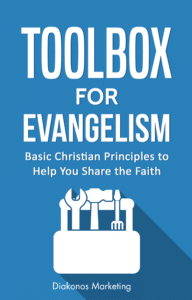If you remember, at the beginning of October I started a bold project: Get a brand new website to 20,000 visitors a month in one year.
That number wasn’t by accident; statistically, most small business websites fail to even reach out 1,000 views a month, so 20,000 is a challenge. To be fair though, my blog will have a lot more content on it than your average site, but the point remains the same.
Since I sent that first email on October 1, it seems only reasonable to send the first update on November 1 — exactly one month later. I’ll do my best to document all my struggles as well as any success I have. The goal for this is to create something that anyone can emulate, so I’ll try be as transparent as possible.
So what happened in month 1?
What I Did in October, 2023
In order to reach this goal, there were a few key areas that I knew I wanted to focus on as early as possible: website build, list building, and content generation.
Those are all three long-term plays. The website needs to be created early and made active so that Google can index the domain. List building has a compounding effect, and content generation just takes a lot of work.
I’ll detail each one of those three areas below.
Website Build
The domain I was using for this website is one that I’ve already purchased and had generated traffic to before, so in the interest of fairness, I needed to delete that site entirely in order to get traffic flowing.
That part didn’t take too long. I deleted the old site and every post that went with it (saved the articles on my hard drive though), and re-built the site from the ground up.
The site is designed to be super simple: The only thing on there is literally a blog page and a home page. I’ll worry about the other ones as needed.
Fortunately, building a site like that took only a few hours max. I started a new application on my Cloudways server (where I host the church sites we work with), installed Elementor to build the site, and used an Astra theme as the base layer. Astra’s starter templates are a lifesaver for a project like that.
After the site was active, I installed a Google Analytics code to track the metrics. Otherwise, I’d have no idea how many people are actually visiting the site.
I didn’t focus too much on search engine optimization (SEO) for this leg. I installed the necessary header tags and did some keyword research using Google’s keyword planner, but the real juice of this project will come from the individual blog articles, so that’s where I plan on focusing most of my time in SEO.
List Building
Aside from SEO, I also knew that creating a strong and healthy email list is going to be one of the main drivers for my traffic.
But not in the way that you might think.
Technically, clicks through an email are called referral traffic, which is any kind of traffic that doesn’t come through paid ads or organic searches. Since organic traffic is what I’m after, referral traffic technically doesn’t count towards the 20,000.
But that doesn’t mean it’s totally worthless. Clicks from anywhere count as a ranking signal to Google (good or bad), so if I can get hundreds of clicks every time I send out an email, it can only help my efforts.
Note: Not all traffic is created equally. Spambots and traffic from really low-quality websites can actually hurt your website health, so if you’re planning on buying traffic through a service like Fiverr, think again. You want good, healthy, authentic traffic.
The primary way I’m building up my email list right now is through Facebook ads, and, I’m proud to say, it is going off like gangbusters. I started the month running a simple lead generation campaign through Facebook to drive signups, and the results have been awesome.
For the month of October, I averaged $0.43 per email address. That’s waaay below what I thought (I expected closer to $1 even), so I bumped up the average daily spend midway through the month from $5 a day to $10 a day.
At the end of the month, I ended up with 574 new email addresses on my list. It’s not a ton, but with those kind of numbers, I should hit several thousand subscribers within a few months.
And if the industry open and click through rates of 25% and 3% hold true for my list, that means I should get hundreds of people actually opening and clicking on my emails every time.
If you can’t already tell, this is the part of my project I’m most excited about. I knew all of this would work in theory, but seeing it perform this well this early is really exciting.
Content Generation
My SEO strategy is simple: Produce a daily blog of around 300-500 words every single weekday. As mentioned in my Bible Blog announcement, I’ll be batching these articles ahead of time and scheduling them to drop every single morning at 6AM CST.
October was a busy month. In addition to our regular tasks with Diakonos churches and my local work at Hillside, I was also gone for a week in the middle due to a vacation. We had two Gospel Meetings for churches that we did the advertising for, and things are starting to ramp up with my secular marketing agency (3430 Marketing), so the time was short.
Because of that, I didn’t have as much time to write as I wanted – just three short articles, so far. Each one clocked in around 400 words and they only took me about 25 minutes apiece to write though, so I’m confident I can make up ground and stay on schedule.
Originally, I thought I would follow Mark Roberts’ five day Bible reading schedule. However, once I started, I found a ton of topics inside those blocks of Scripture that I wanted to write about, so I decided to just start in Genesis and write articles as I found topics.
This type of approach was actually really encouraging for me. So many times, I’m reading for sermons, classes, articles, etc, that it’s hard to sit down and actually just read the text on my own. Since this blog is a passion project (for now), there isn’t any pressure to write this or that. It’s just me, the Bible, and my thoughts.
To create a solid link network inside my website, I’ll be using Link Whisper. It’s an amazing (free) plugin that scans your posts and suggests internal link opportunities, then gives you the hyperlink to insert automatically.
It’s not perfect — I’ve found myself manually searching for articles a few times already — but it suggests opportunities I may not have thought of otherwise, so it’s definitely helpful.
Conclusion
This may not all sound like much, but I knew at the beginning that October was mostly going to be a “foundational” type of month. Now that I have these processes in place, I’m excited to get the content engine going and start sending out emails to my subscribers.
Prayerfully, I’ll have some solid results to share with you all next month.
Have a great November!

